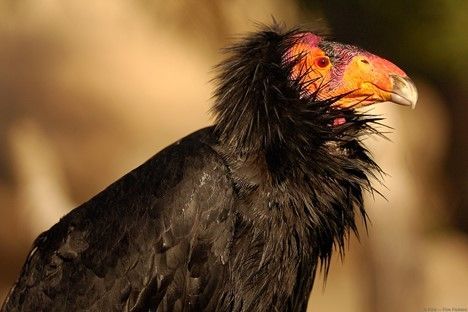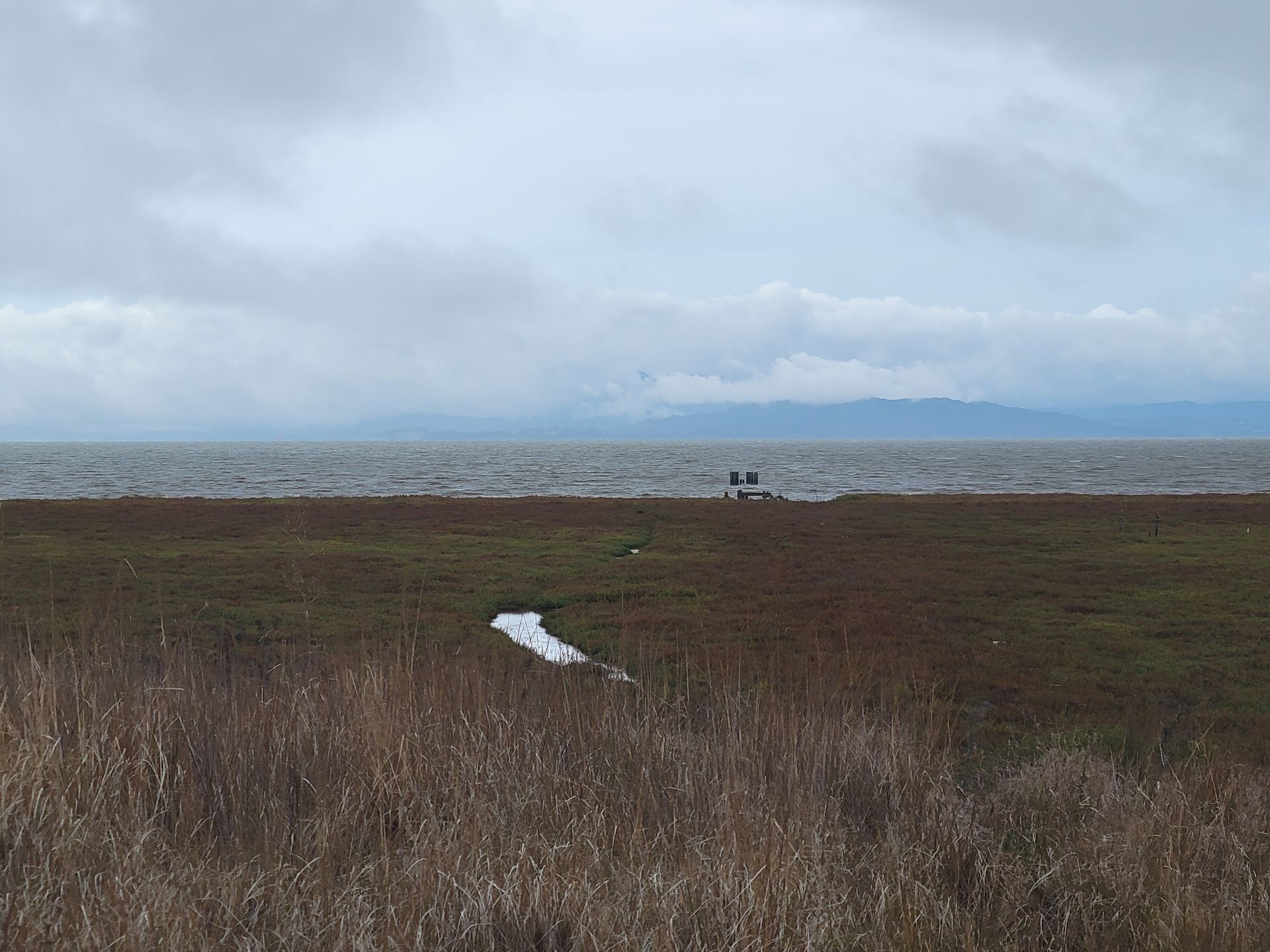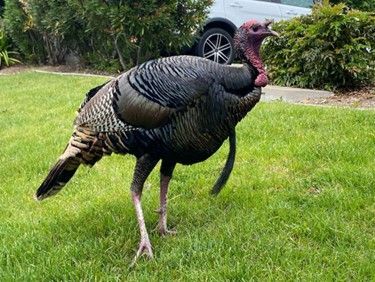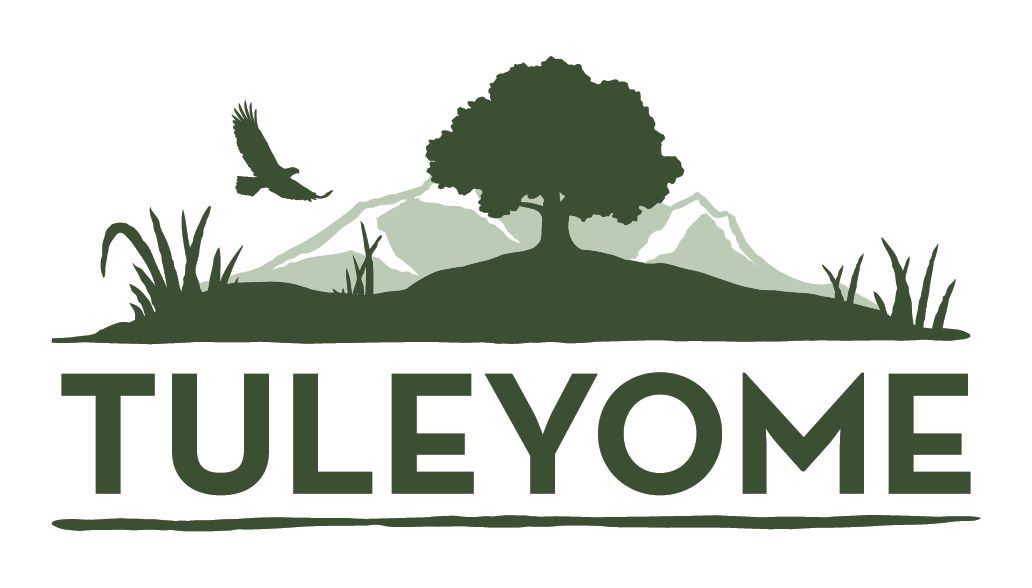Tuleyome's Science Corner: California Condors

California Condor - Photo by KALW.org
California Condor History
If you think California Condors (Gymnogyps californicanus) look like relics of the ice age, that’s because they literally are. Roughly 40,000 years ago, California Condors were soaring over much of North America, from the Pacific coastline to Texas, Florida and New York. And they were doing just fine; finding mates, nesting in enormous burned-out trees and in cliff caves, gliding thousands of feet above at modern-day highway speeds, dining on the deceased giant land mammals that roamed their territories. As the largest land bird at about 25 pounds and with an almost 10-foot wingspan, not much affected their modus operandi. At least not until a while later. When Lewis and Clark explored the Pacific Northwest in the early 1800’s, they found condors. Into the 1930’s, Condors were still occupying Baja California. Shortly after, the birds were limited to only the mountainous regions of southern California where they were surviving on dead livestock and deer. Even then, they may have been alright but as time marched on, the giant birds were shot, poisoned and captured. Their eggs were collected, their food source was greatly reduced and their habitat was destroyed. Later collisions with power lines and vehicles took their lives. Today they are critically endangered. By the 1980’s the entire species was reduced to a dismal total of just 22 birds in the wild and a handful in captivity. In a last-ditch effort to save the species, biologists made the gut-wrenching decision to capture all of the remaining wild birds and enter them into a captive breeding program. It was a big decision to make, some felt that the condor should experience freedom even if it meant the end of the species; while others felt that everything that could possibly be done to save the only member of the Gymnogyps genus, should be done.
Threats to Condors
It’s been illegal to kill California Condors for nearly 100 years but that really hasn’t helped much. Condors have been afforded both Federal and State protection under the Endangered Species Act for over 50 years but it became obvious that they were not going to survive in the wild without help. One of the major problems threatening the birds’ survival in the wild is lead poisoning. Condors do not have strong feet and talons like birds of prey such as hawks, owls and eagles. They rely on either mother nature or man to serve up a delicious meal of carrion. Often what they find is the remnants of something that was shot. Lead is soft and fragments upon impact. If whatever condors were eating was shot using lead ammunition, it was surely consuming bits of lead along with the meat. Because they’re friendly scavengers, a contaminated carcass can poison several condors gathered together at the dinner table. Most, if not all of the condors alive today have received at least one treatment for lead poisoning. Past use of the pesticide DDT has also caused problems for the species by resulting in eggs not hatching. It is also believed that human encroachment has brought with it more ravens which also impacts eggs and nestlings.
Captive Breeding Program
When the final free roaming bird was captured in 1987, all of the condors went to one of two captive breeding programs at either the San Diego Wild Animal Park or the Los Angeles Zoo. In 1988, the first chick was hatched in captivity and five years later, in 1992, two of the captive-bred female California Condors were released in Ventura County. By 1994, over 100 eggs had been laid in captivity and by 2004, two additional captive breeding centers were opened for a total of four. Since 1993, releases have taken place in Santa Barbara County, San Luis Obispo County, Monterey County, San Benito County, along the Big Sur Coastline, in Pinnacles National Monument, near Grand Canyon National Park in northwestern Arizona and in northern Arizona and near Sierra San Pedro de Martir National Park in Baja California, Mexico.
Researchers believe a contributing factors to the Condors’ struggle is that they don’t reach sexual maturity until between the ages of six and eight. When they do mate and nest, only one egg is laid every two years. It can take up to a week for the chick to fully emerge from the egg and unlike most altricial species, the chick’s eyes are open. The chicks mature slowly and remain in their parents’ care for a full year, covered in gray down for much of that time. They usually stick close by for an additional year and about the time that the mature chick is ready to leave, the process starts over when another 4 inch, blueish-white egg is laid. If the egg is lost (or removed for participation in the captive breeding program), or the chick does not survive, a second egg may be laid that season. As of December 31, 2020, there was a total of 504 California Condors, 329 living wild. All of them descendants of the original 27 or so birds brought into the captive breeding program in 1987.
Molok Luyuk – Condor Ridge
On July 29, 2021, Congressman Garamendi released draft legislation known as the Berryessa Snow Mountain Expansion Act which would add nearly 4,000 acres of the Lake County portion of Walker Ridge. Walker Ridge, known as Molok Luyuk (ma.lok lue.yok) in Patwin, is part of the California Condor’s historic range and has recently been proposed as a future release site for captive-bred Condors. Please support the Protect Walker Ridge Alliance to preserve this special place and to ensure that California Condors can again safely soar over their native territory. To voice your support for Molok Luyuk and the Berryessa Snow Mountain National Monument Expansion Act, please email Legislative Assistant, Tigran Agdaian at Tigran.Agdaian@mail.house.gov.
Condor Fun Facts
- Condors raise their neck feathers to keep warm in cold weather.
- In hot weather, condors can lower their core temperature by releasing their body waste on their legs; as it evaporates, it cools them down.
- Condors are very tidy and bathe frequently. If water isn’t available, they rub their heads on neck on grass, rocks or branches to clean off. After cleaning, they spend hours preening.
- Condors have great immune systems and don’t get sick from eating rotting meat.
- Their beaks are very strong and sharp for tearing through tough animal hides.
- Ever wonder why their heads are featherless? Think about what they eat - having a bald head helps to keep it cleaner.
- They can live 50 to 60 years!
- Condors don’t have vocal cords, they can only hiss and grunt. However, sounds generated by their wings can be heard a half a mile away.
- Condors’ eyesight is much better than their sense of smell. Again, think about what they eat…
- Adult condors can show emotion by changing the color of the skin on their heads and necks.
- If they are frightened, they may throw up their last meal. Once more, think about what they eat. It’s better for everyone not to scare them.
- It has recently been discovered that California Condors can reproduce without a male. This discovery is very new and data is still being collected and analyzed.
-Kristie Ehrhardt; kehrhardt@tuleyome.org
Tuleyome Land Conservation Program Manager
RECENT ARTICLES






